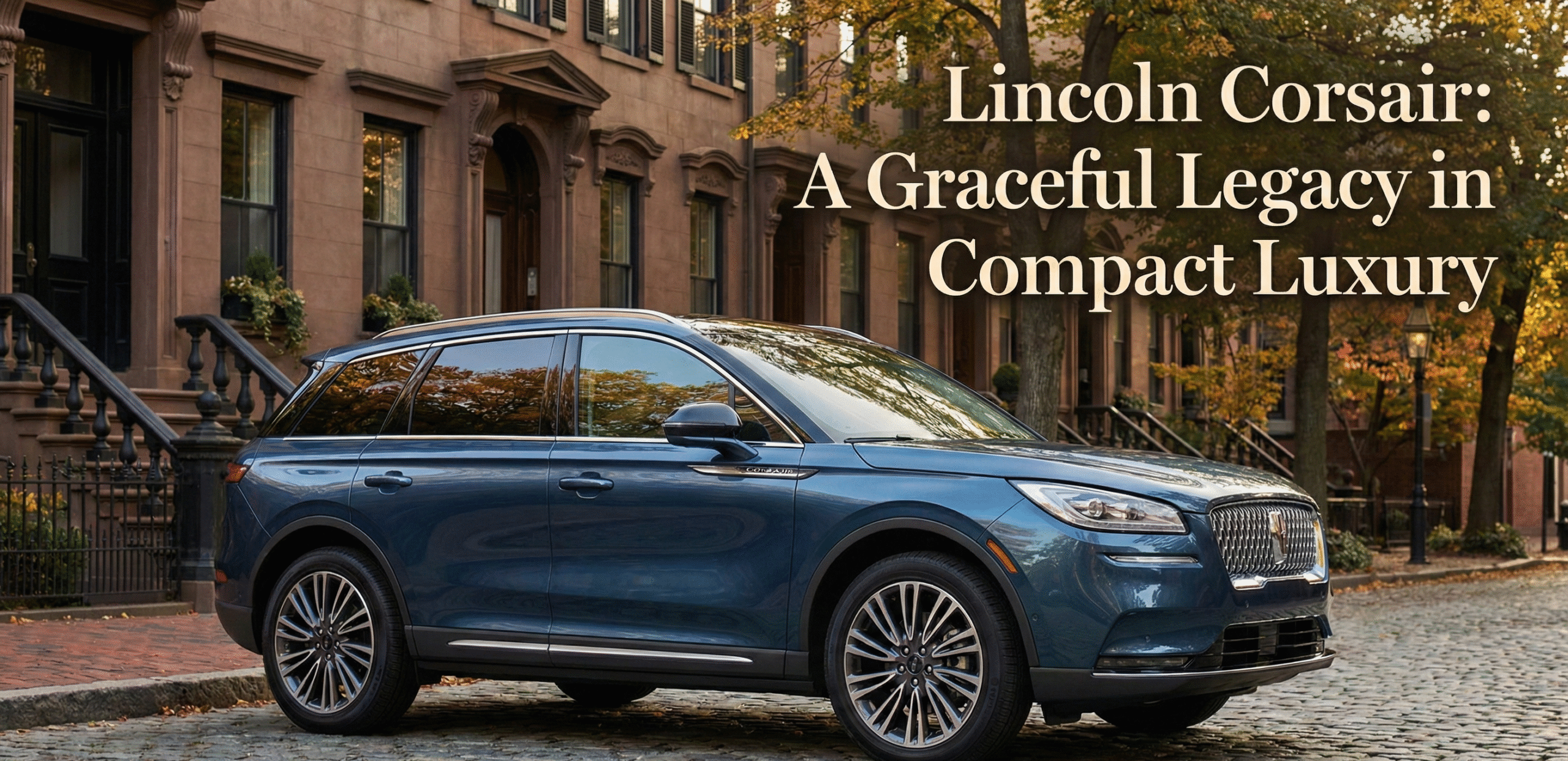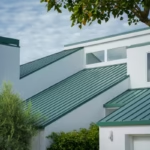Few vehicles in Lincoln’s modern lineup have embodied the brand’s commitment to subtle elegance as effectively as the Lincoln Corsair. Introduced for the 2020 model year as the successor to the MKC, it quickly positioned itself as a serene alternative in the compact luxury SUV segment. From its debut, the Corsair sought to answer a growing consumer desire: a small, premium crossover that prioritized calm over flash, refinement over command, and comfort over theatrics. And in the years following its launch, it would go on to become Lincoln’s top-selling model.
In the first hundred words, readers searching for the essentials will find them here: the Corsair blended sculpted design, advanced safety technology, and a choice between a turbocharged gasoline engine and a plug-in hybrid powertrain offering up to 27 miles of electric driving. Spacious for its class, impressively quiet, and thoughtfully equipped even in base trim, the Corsair carved a strong niche as a daily luxury companion. Yet despite steady sales, Ford has announced that Corsair production will end after the 2026 model year as part of a broader strategic shift toward electric vehicles—marking a bittersweet farewell for a model that helped shape Lincoln’s design direction.
Origins and the Pursuit of “Quiet Flight”
The Corsair’s debut marked a step forward for Lincoln’s “Quiet Flight” design philosophy, which emphasizes horizontal lines, warm materials, soft illumination, and a cocoon-like cabin atmosphere. Designers refined the cabin around notions of sanctuary—spaces meant not merely for travel but for decompression. Sculpted exterior lines, a dignified stance, and a refined grille helped the Corsair stand out in a crowded segment where sharp edges and aggressive posturing often dominate.
It shared Ford’s C2 platform with the Escape and Bronco Sport, but the brand worked deliberately to differentiate it. Sound-deadening materials, a more forgiving suspension tune, and an elevated interior treatment ensured that the Corsair felt like a true Lincoln rather than a well-appointed Ford. This approach made the Corsair appealing to buyers seeking a compact luxury SUV that felt upscale without the hyper-athletic character common among German rivals.
Powertrain Choices and Road Manners
Lincoln offered the Corsair with two core powertrains—each aimed at different buyer sensibilities. The standard turbocharged 2.0-liter four-cylinder produced 250 horsepower and 275 lb-ft of torque, paired to an eight-speed automatic and available with either front- or all-wheel drive. It delivered smooth acceleration, a measured but confident driving character, and fuel economy competitive for its class.
For drivers seeking electrified flexibility, the Grand Touring plug-in hybrid combined a 2.5-liter Atkinson-cycle engine with electric motors at both axles. The 14.4-kWh battery enabled up to 27 miles of electric-only driving, making short commutes, errands, and in-town trips possible without engaging the gasoline engine. Total output reached 266 horsepower, and the hybrid’s regenerative braking and quiet EV operation complemented Lincoln’s sanctuary ethos.
Whether gas or hybrid, the Corsair prioritized comfort over sport. Steering was gentle, ride quality subdued harshness effectively, and cabin noise remained impressively low. The plug-in hybrid model particularly resonated with drivers who valued calmness and efficiency in equal measure.
Trim Levels, Features and Interior Philosophy
The Corsair arrived in three trims—Premiere, Reserve, and Grand Touring (hybrid)—each offering a rich suite of features. Even the entry-level Premiere included heated seats, adaptive cruise control, blind-spot monitoring, and remote start. Higher trims brought more lavish finishes, panoramic roofs, premium audio, and enhanced driver-assistance technology.
The Corsair’s packaging was another strength. Its 102.5 cubic feet of passenger volume and up to 57.6 cubic feet of cargo space with the rear seats folded made it one of the more versatile choices in compact luxury. The sliding rear bench on many models allowed owners to prioritize either legroom or cargo room on demand.
Below is a table summarizing the key differences among trims:
| Trim | Powertrain | Fuel Economy (EPA) | Approx. MSRP |
| Premiere | 2.0L Turbo | 21/28 mpg (city/highway) | ~$43,500 |
| Reserve | 2.0L Turbo | 21/28 mpg | ~$50,700 |
| Grand Touring | 2.5L Plug-in Hybrid | 76 MPGe / 33 mpg combined | ~$55,860 |
This balance of features and flexibility made the Corsair especially attractive to downsizing luxury buyers—those seeking premium comfort without committing to the footprint of a midsize SUV.
A Strong Market Performer With a Finite Future
From its first full year in production, the Corsair became Lincoln’s bestseller. Its practical size, calm driving manners, and hybrid option helped it appeal to a broad base of luxury buyers, many of whom were transitioning from sedans to crossovers. Sales remained steady even amid a rapidly shifting automotive landscape.
But the Corsair’s strengths weren’t enough to guarantee its longevity. Ford’s strategic redirection—centered on retooling its Louisville plant to produce an affordable EV pickup—ultimately sealed the model’s fate. By discontinuing the Corsair after the 2026 model year, Lincoln and Ford free manufacturing capacity and investment capital for their next generation of vehicles. For fans of the Corsair, this marks the end of a short but significant chapter.
Real-World Impressions and Reliability Notes
Owner feedback reveals a nuanced portrait of the Corsair experience. Many praised the hybrid’s seamless transition between EV and gas modes, the cushioned ride, and the hushed cabin. Drivers upgrading from larger SUVs reported appreciating the Corsair’s smaller footprint without feeling a loss of comfort.
Yet others pointed to quirks: some found the seating position unusual or the interior dimensions unexpectedly compact. Certain owners experienced hiccups with the 360-degree camera system or infotainment lag—issues that occasionally led to prolonged service visits. Hybrid owners also navigated software updates and occasional charging irregularities.
Early models earned strong reliability notes from consumer publications, though later hybrid recalls relating to high-voltage battery concerns added caution for some buyers. Despite these challenges, the majority of Corsair owners reported satisfaction with the SUV’s comfort, utility, and refined presence.
Expert Commentary
Three expert perspectives help illuminate the Corsair’s role in Lincoln’s evolution:
- Design Perspective: An automotive designer observed that the Corsair’s horizontal lines and ambient lighting demonstrated Lincoln’s shift toward serenity-centric interiors, creating an environment meant to soothe rather than stimulate.
- Market Analysis: A luxury-segment analyst noted that the Corsair filled a vital niche—premium but approachable, aspirational without being imposing—perfect for buyers stepping into the luxury market.
- Engineering Insight: An engineer specializing in hybrid systems remarked that the Corsair Grand Touring’s electric range, though modest, was ideally suited for typical commuter patterns, ensuring the hybrid system delivered both practicality and refinement.
A Look at the Corsair’s Legacy
When future historians of Lincoln’s design language trace the brand’s modern reinvention, the Corsair will stand as an essential bridge. It reflected Lincoln’s pivot toward tranquility as a defining characteristic—an identity distinct from the performance-driven ethos of many European competitors. It was also one of the brand’s earliest successful forays into plug-in hybrids, proving that low-stress electrification could feel seamless rather than experimental.
Its discontinuation does not diminish its accomplishments. Instead, it highlights the rapid pace of industry evolution. As electric vehicles reshape priorities and reallocate resources, even strong sellers may bow out in service of the next frontier. For the Corsair, that reality frames a graceful exit for a model that quietly excelled.
Key Takeaways
- The Lincoln Corsair debuted for 2020 and quickly became the brand’s top seller.
- It offered a choice between a 2.0-liter turbo engine and a 2.5-liter plug-in hybrid.
- The hybrid’s 27-mile electric range suited daily commutes and enhanced refinement.
- Interior design centered on calmness, premium materials, and a sanctuary-like experience.
- Strong sales couldn’t prevent its discontinuation after 2026 due to shifting EV priorities.
- Owners praised comfort and efficiency, though some reported tech-related issues.
- The Corsair leaves a legacy as a refined, modern expression of Lincoln’s “Quiet Flight” ethos.
Conclusion
The Lincoln Corsair’s story is one of quiet influence rather than loud ambition. It never sought to dominate the compact luxury SUV segment with power or flash; instead, it chose subtlety, comfort, and thoughtful design. For thousands of owners, it became the ideal everyday luxury companion—practical yet elevated, compact yet spacious, efficient yet indulgent where it mattered.
Its upcoming farewell underscores the industry’s accelerating shift toward electrification, where even successful internal combustion models must sometimes step aside. But the Corsair’s legacy remains intact: it helped redefine what a modern Lincoln could be, showed the value of hybrid flexibility within the luxury sector, and offered a sanctuary for drivers seeking respite from the noise of daily life.
As Lincoln prepares for an electric future, the Corsair stands as a testament to the power of quiet confidence—proof that not every great vehicle needs to shout to be heard.
FAQs
What year did the Lincoln Corsair debut?
It launched as a 2020 model, replacing the Lincoln MKC in the compact luxury SUV segment.
What engines are available in the Corsair?
Buyers can choose between a turbocharged 2.0-liter gasoline engine and a 2.5-liter plug-in hybrid Grand Touring model.
How far can the plug-in hybrid Corsair drive on electricity alone?
The Grand Touring variant offers up to 27 miles of electric-only range, ideal for short commutes and errands.
Why is the Corsair being discontinued?
Ford will end production after 2026 to repurpose its Louisville plant for the development of a more affordable electric pickup.
Does the Corsair have common reliability issues?
Most owners report smooth performance, though some mention infotainment lag or camera system problems; hybrid models have experienced occasional recall actions.







